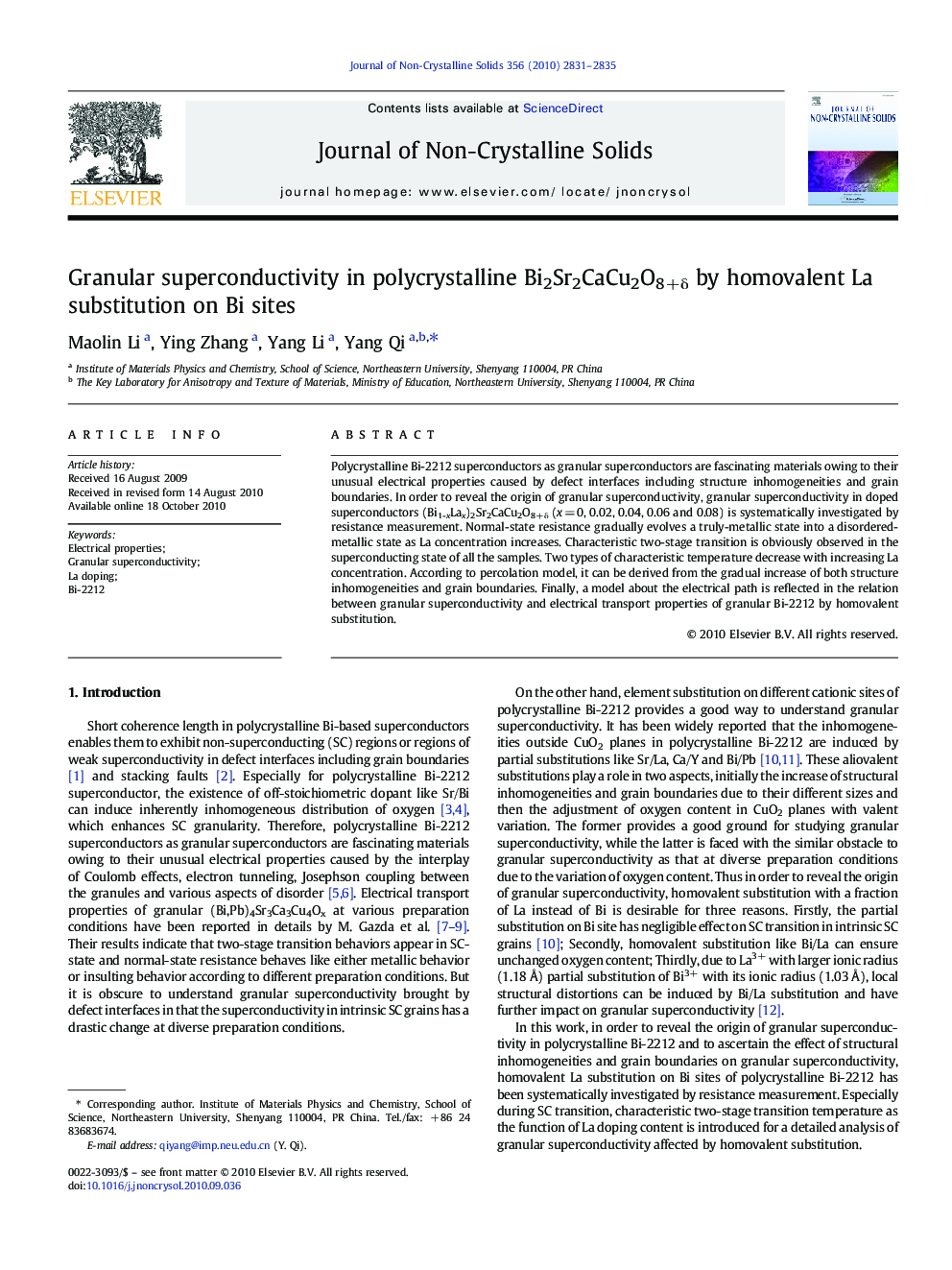| Article ID | Journal | Published Year | Pages | File Type |
|---|---|---|---|---|
| 1481775 | Journal of Non-Crystalline Solids | 2010 | 5 Pages |
Polycrystalline Bi-2212 superconductors as granular superconductors are fascinating materials owing to their unusual electrical properties caused by defect interfaces including structure inhomogeneities and grain boundaries. In order to reveal the origin of granular superconductivity, granular superconductivity in doped superconductors (Bi1-xLax)2Sr2CaCu2O8+δ (x = 0, 0.02, 0.04, 0.06 and 0.08) is systematically investigated by resistance measurement. Normal-state resistance gradually evolves a truly-metallic state into a disordered-metallic state as La concentration increases. Characteristic two-stage transition is obviously observed in the superconducting state of all the samples. Two types of characteristic temperature decrease with increasing La concentration. According to percolation model, it can be derived from the gradual increase of both structure inhomogeneities and grain boundaries. Finally, a model about the electrical path is reflected in the relation between granular superconductivity and electrical transport properties of granular Bi-2212 by homovalent substitution.
